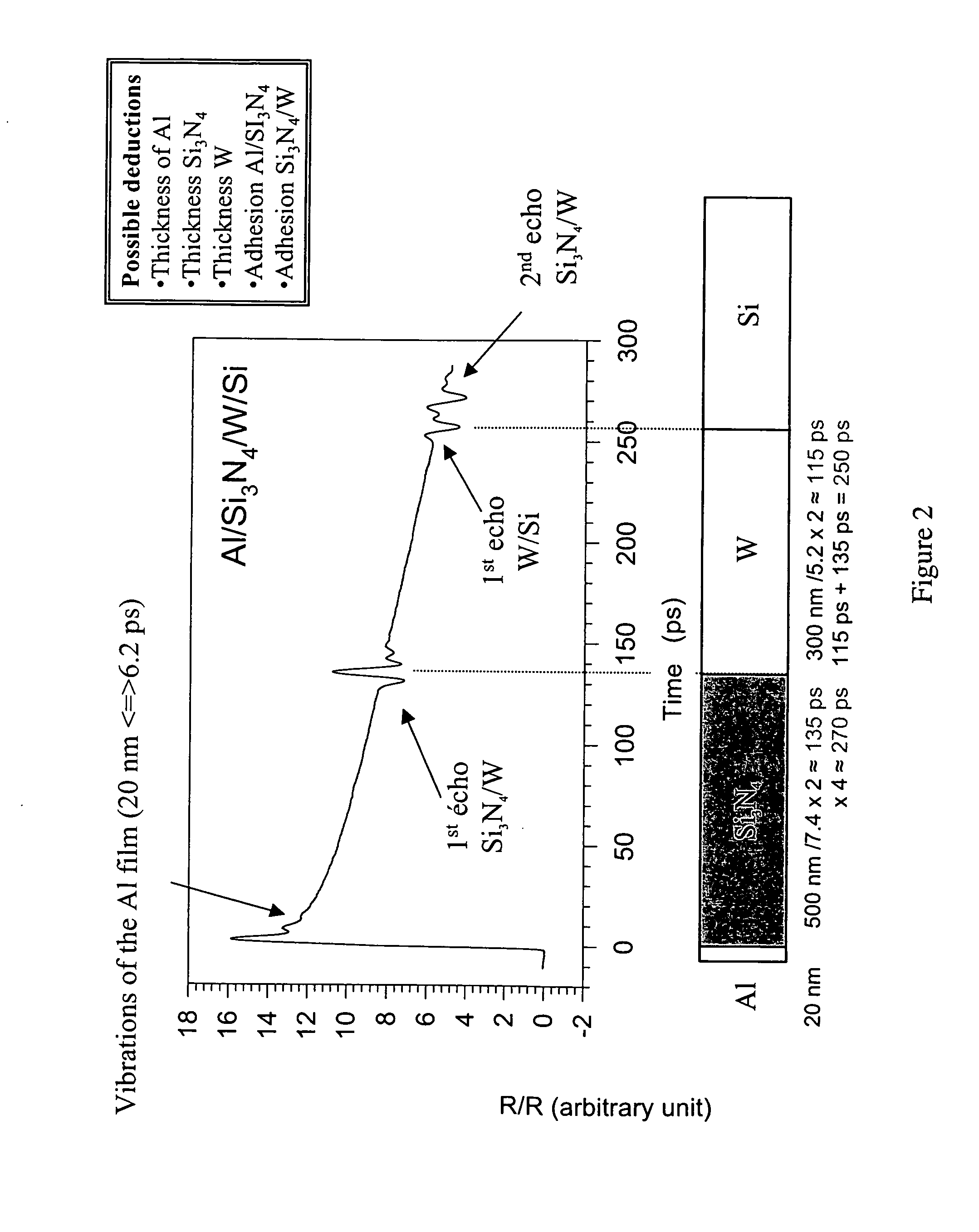Method and Device for Characterising a Structure by Wavelength Effect in a Photoacoustic System
- Summary
- Abstract
- Description
- Claims
- Application Information
AI Technical Summary
Benefits of technology
Problems solved by technology
Method used
Image
Examples
first embodiment
[0027]In a first embodiment, the source is wavelength-tunable via a tunable oscillator of the titanium-sapphire type that can generate pulses of 120 fs at a repetition rate of 76 MHz centered on a wavelength that is tunable in the range 700 nm to 990 nm. This source generates a signal that is split by a splitter 2 into a pump signal P and a probe signal S, both of which are designed to interact with the structure 5 to be analyzed. The probe signal S is subjected to a variation in optical path length relative to the pump signal P, e.g. via a moving mirror 3 that is position servo-controlled. Said probe signal is then focused on the structure 5 by an optical system 4, and is reflected towards detection means 6, e.g. of the photodetector type that are designed to generate a signal that can be analyzed by computation and processing means 7. Naturally, the probe signal can also be detected in transmission through the structure 5.
[0028]In order to enable the signals to go along the proper...
second embodiment
[0032]In a second embodiment, the source 1 makes it possible to generate a continuum of light extending over a wide wavelength range. In which case, the detector means 6 can comprise a spectrometer (not shown) serving to analyze the intensity of the light received before transmitting the signal to be analyzed to the processor means 7. Any system of filters in front of a usual photodetector can also be used. The plurality of wavelengths is then achieved continuously, e.g. by a fixed-wavelength femtosecond laser associated with an optical fiber.
[0033]In general, it is understood that the type of source used is not limiting to the present invention and that any type of source 1 making it possible to generate short laser pulses corresponding to a discrete or continuous set of wavelengths can be used. Similarly, in all of the embodiments, it is possible to use any means suitable for generating a time shift between the pump first beam and the probe second beam. This shift can thus be gene...
PUM
 Login to View More
Login to View More Abstract
Description
Claims
Application Information
 Login to View More
Login to View More - R&D
- Intellectual Property
- Life Sciences
- Materials
- Tech Scout
- Unparalleled Data Quality
- Higher Quality Content
- 60% Fewer Hallucinations
Browse by: Latest US Patents, China's latest patents, Technical Efficacy Thesaurus, Application Domain, Technology Topic, Popular Technical Reports.
© 2025 PatSnap. All rights reserved.Legal|Privacy policy|Modern Slavery Act Transparency Statement|Sitemap|About US| Contact US: help@patsnap.com



